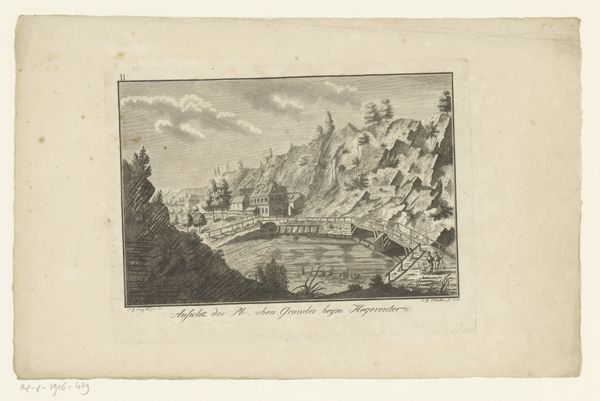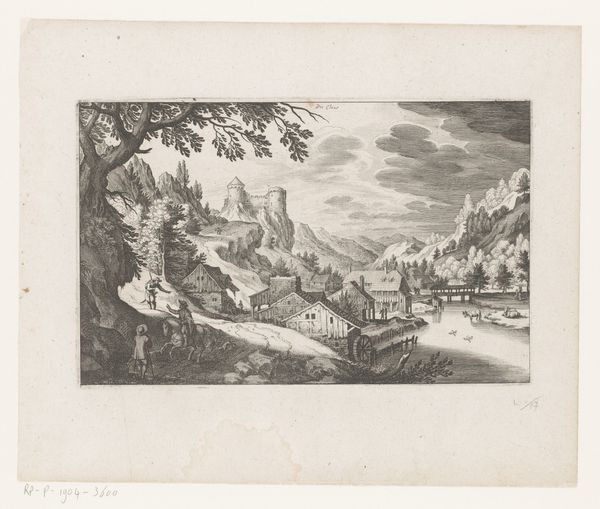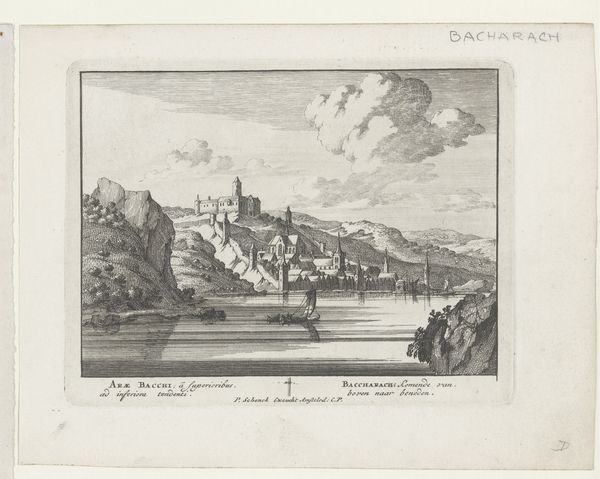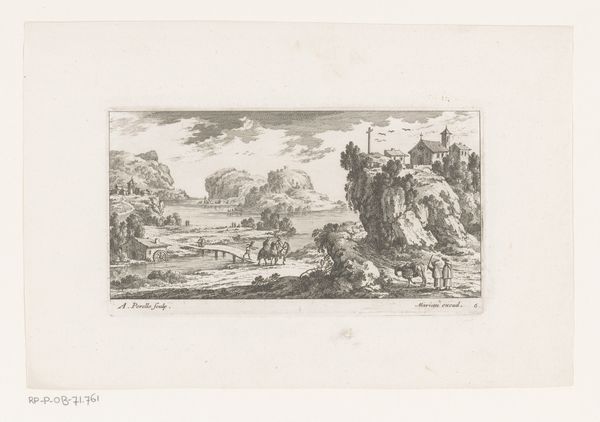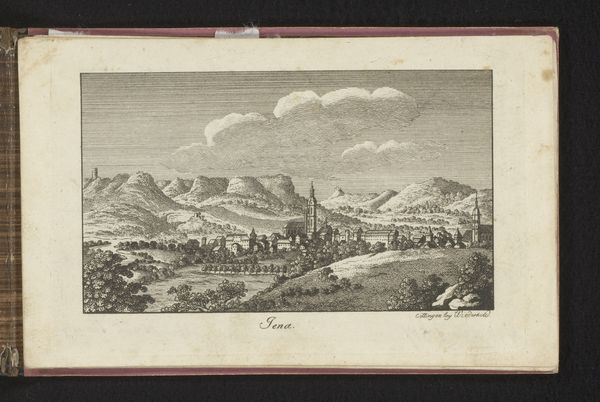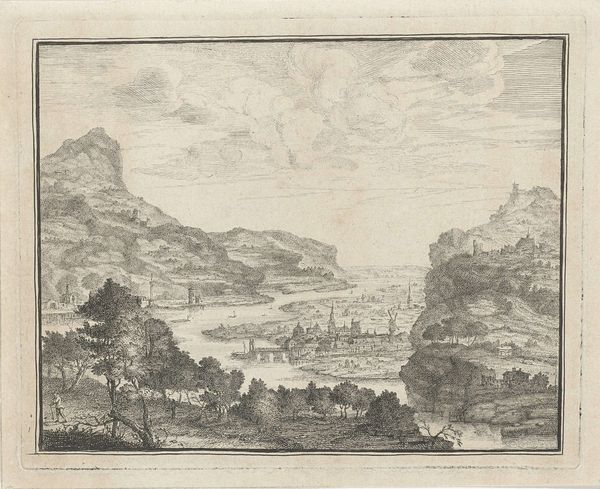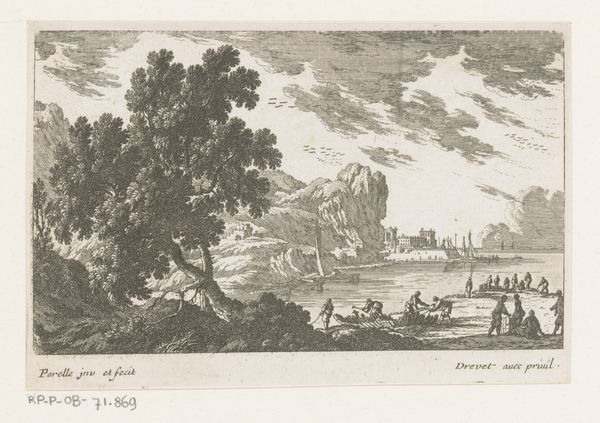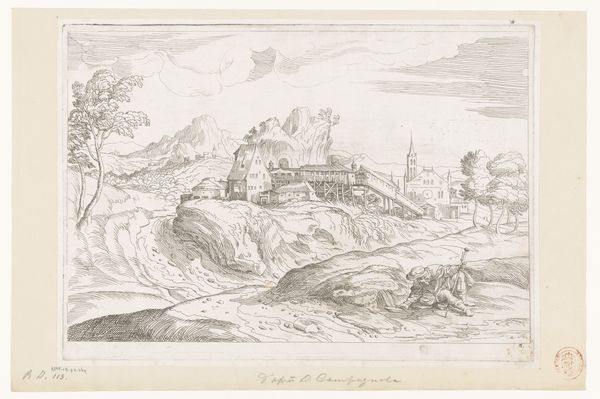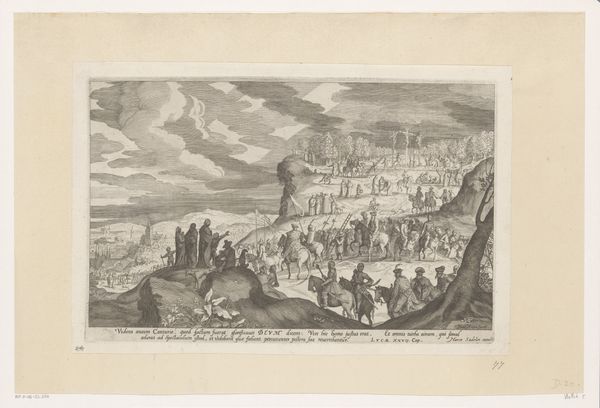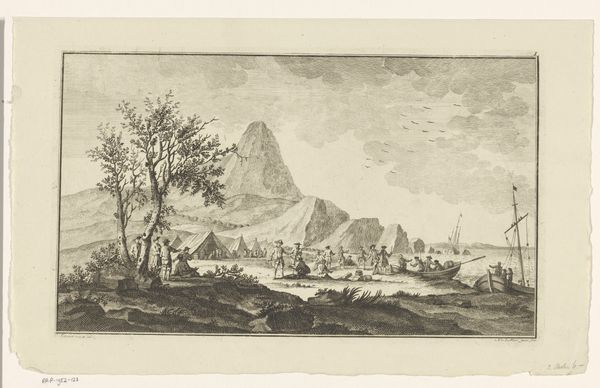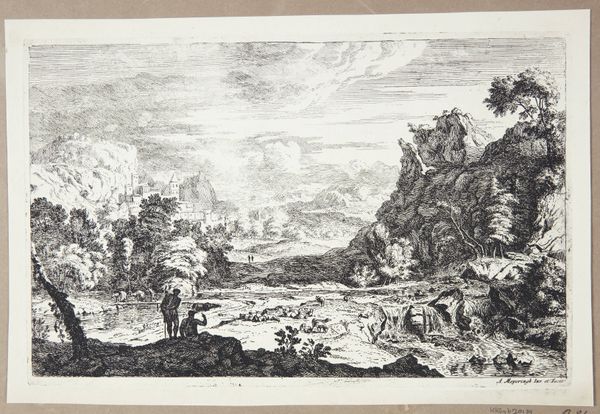
Berglandschap met rivierdal met een stad en twee dode bomen in de voorgrond 1603 - 1650
0:00
0:00
matthausimerian
Rijksmuseum
etching
#
baroque
#
etching
#
landscape
#
etching
#
cityscape
Dimensions: height 186 mm, width mm
Copyright: Rijks Museum: Open Domain
Editor: Here we have "Mountain Landscape with River Valley with a City and Two Dead Trees in the Foreground," an etching by Matthäus Merian dating from around 1603 to 1650. I find the contrast between the detailed cityscape in the distance and the decaying trees in the foreground really striking. What catches your eye? Curator: What I see is a landscape burdened by history and perhaps anticipating future conflict. Notice how the 'dead trees,' aren't just decorative elements but imposing structures that dominate the foreground, dwarfing the figures around them. The figures themselves appear almost listless and unaware, going about daily business while in the shadow of decaying trees. What does that say about the impact that history has upon daily life? Editor: That’s a powerful interpretation. I hadn’t considered the figures’ seeming nonchalance. Does that have something to do with its being Baroque? Curator: Partly, perhaps, but I am also looking at what is absent and what is repressed here. This etching isn't simply documenting a landscape; it's constructing a visual argument, albeit a subtle one, about the relationship between humanity, the natural world, and the forces of history. Editor: Forces of history? What sort of historical context might influence such a message? Curator: Consider the religious and political turmoil of the 17th century. Landscapes during this time became vehicles for exploring ideas of order, control, and the sublime, often in response to social upheaval and shifting power dynamics. Look at the city on the horizon - stable, walled off, a place to conduct business - it is contrasted by decay right under our noses. We see here the human element threatened by greater forces that are both political and earthly. Editor: I see your point. Now that you mention the history, I’m noticing all the little details I missed, how carefully each area is arranged, which really builds upon that historical reading. Curator: Exactly. And those details encourage us to consider how power operates within both physical spaces and societal structures. It's in the juxtaposition of seemingly disparate elements that we begin to unpack its significance and its continuing relevance to our own world. Editor: That’s given me a completely different perspective on landscape art. I never would have seen it this way.
Comments
No comments
Be the first to comment and join the conversation on the ultimate creative platform.
